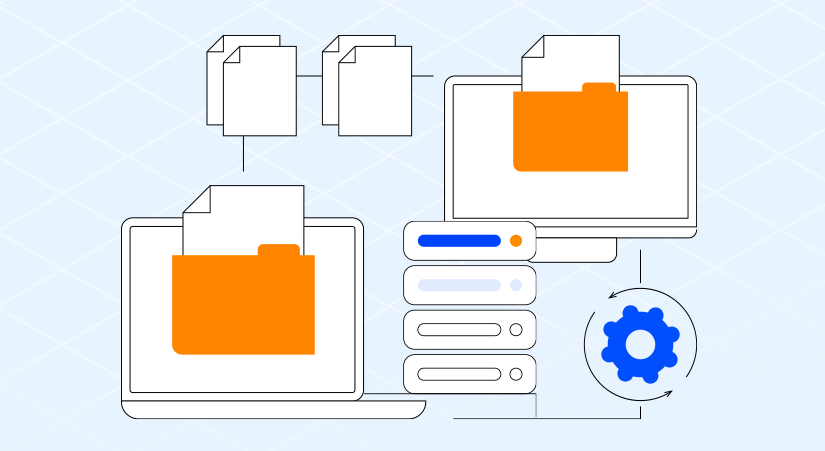

As the backbone of modern digital infrastructure, network efficiency is a key factor in supporting high-volume data transfer, real-time analytics, and seamless user experiences. The move to 10 Gigabit Ethernet (10GbE) networks has been transformative for organizations with demanding workloads. Yet, to truly capitalize on the throughput potential of 10Gbps network connections, fine-tuning parameters such as frame size—specifically, the adoption of jumbo frames—becomes essential. This in-depth exploration examines the role of jumbo frames in 10GbE environments, unpacks their operational benefits and pitfalls, and guides enterprises on maximizing performance while minimizing risk.
What Are Jumbo Frames and Why Do They Matter in 10Gbps Networks?
Jumbo frames refer to Ethernet frames with payload sizes that exceed the standard 1,500 bytes, often configured at 9,000 bytes or higher. The rationale behind their use is straightforward: by allowing each frame to carry more data, the number of packets traversing the network is reduced. This minimizes protocol overhead, lowers CPU processing demand, and streamlines data flows across the network.
The relevance of jumbo frames is particularly pronounced in 10GbE networks. The sheer volume of data handled by such links—whether for large-scale file transfers, backup operations, or high-definition media delivery—can overwhelm conventional MTU settings, leading to inefficiencies and bottlenecks. Jumbo frames, when properly implemented, can unlock higher throughput and enable applications to fully leverage the speed of 10Gbps links.
Technical Mechanics: How Jumbo Frames Improve Throughput
The performance gains associated with jumbo frames stem from their impact on network and system resources. Fewer, larger packets mean that network interface cards (NICs), switches, and routers process less overhead per byte of actual data. This translates to lower interrupt rates on servers, more efficient use of switch fabric, and a higher data payload delivered per second.
On a practical level, this efficiency is most apparent in scenarios involving sustained high-bandwidth transfer, such as SAN replication, database synchronization, or VM migration. By reducing the total number of frames that must be processed and acknowledged, jumbo frames can enable more consistent throughput, lower latency, and a reduction in retransmissions due to buffer overflow or congestion.
Pitfalls: Compatibility, Fragmentation, and Troubleshooting
Despite these advantages, leveraging jumbo frames within a 10GbE network is not without complexity. The most common—and often overlooked—challenge is the requirement for end-to-end compatibility. Every device along the data path, including servers, switches, routers, and endpoint devices, must support the chosen MTU. If any segment of the path operates at the default 1,500-byte MTU, packets may be fragmented or dropped entirely, resulting in degraded network performance and difficult-to-diagnose connectivity issues.
Fragmentation is particularly detrimental in environments with mixed hardware or legacy systems. For instance, if a storage server is configured for jumbo frames but the intermediary switch is not, data packets exceeding the standard MTU will be split, increasing network overhead and potentially introducing latency spikes. In some cases, fragmented packets may be dropped, leading to retransmissions and further reducing throughput.
Another consideration is protocol behavior. While TCP is generally robust in handling larger frames (provided window scaling and buffer sizes are tuned accordingly), protocols such as UDP may not handle fragmentation gracefully, and certain real-time or low-latency applications may see diminished performance if jumbo frames are not universally supported.
Implementation Best Practices: Planning, Testing, and Segmentation
To realize the benefits of jumbo frames on a 10Gbps network connection, organizations should take a methodical approach:
- Inventory and Compatibility Checks: Catalog all network devices and endpoints involved in the data path. Consult vendor documentation or use discovery tools to verify jumbo frame support and identify any limiting devices.
- Uniform MTU Configuration: Set the MTU consistently across all interfaces, switches, and routers involved in the jumbo frame data path. For Ethernet, 9,000 bytes is the common standard, but always validate the supported sizes for each component.
- Testing and Validation: Use tools like ping with custom packet sizes and the don’t-fragment flag (e.g., ping -f -l 8972) to verify end-to-end jumbo frame transmission. Monitor for packet loss, fragmentation, or increased latency.
- Segmented Network Design: Where mixed environments exist, consider isolating jumbo frame traffic onto dedicated VLANs or physical interfaces. This allows high-throughput workloads to benefit from larger MTUs without impacting devices or applications that do not support jumbo frames.
- Ongoing Monitoring: Continuously monitor network performance using flow analytics and system logs. Watch for signs of increased retransmissions, buffer overruns, or application errors that may indicate misconfiguration or hardware mismatch.
Advanced Considerations: Protocols, Virtualization, and Application Layer Impact
Beyond basic configuration, several advanced considerations can influence the success of jumbo frame deployment:
- Protocol Tuning: Adjust TCP window sizes and buffer allocations to match the increased frame size. For UDP or specialized protocols, test performance under load and adjust application-level settings as needed.
- Virtualized Environments: For organizations running virtual machines or containers, ensure that virtual NICs, hypervisors, and underlying physical hardware all support the chosen MTU. Inconsistent settings at any layer can cause silent performance degradation.
- Application Layer Awareness: Some applications may have built-in assumptions about frame size or may not handle larger packets efficiently. Consider engaging with application vendors or conducting in-house testing for mission-critical workloads.
Dataplugs Dedicated Servers: Optimized for High-Throughput, Flexible Networking
Businesses seeking to unlock the full value of 10Gbps networking often turn to dedicated server platforms that offer granular control over hardware and network configuration. Dataplugs provides dedicated servers in Hong Kong designed for demanding, data-intensive operations. These solutions feature high-bandwidth 10GbE uplinks, robust network hardware, and administrative access for custom MTU and jumbo frame tuning.
Key advantages for organizations leveraging Dataplugs dedicated servers include:
- End-to-End Support: All network segments, from server NIC to top-of-rack switch, are validated for jumbo frame compatibility, minimizing the risk of fragmentation or connectivity loss.
- Flexible MTU Management: Customers can configure the MTU to meet specific workload requirements, whether for SAN replication, media streaming, or large-scale backup.
- Dedicated Bandwidth: With unmetered 10Gbps network connections, traffic shaping and bandwidth contention are virtually eliminated, ensuring consistent performance even under peak load.
- Expert Technical Assistance: The Dataplugs support team provides guidance on best practices for jumbo frame deployment, troubleshooting, and ongoing performance optimization.
- Resilient Infrastructure: Located in Tier 3+ data centers with direct connectivity to regional and global networks, Dataplugs dedicated servers deliver low-latency access and high availability for mission-critical applications.
By choosing a hosting partner that understands the nuances of advanced network configuration, enterprises can streamline their deployment of high-performance, 10GbE-enabled services—whether for private cloud, hybrid IT, or content delivery.
Conclusion: Weighing the Gains Against the Pitfalls
Effectively implementing jumbo frames on a 10Gbps network connection is a balancing act between maximizing throughput and minimizing operational risk. The potential for increased efficiency, reduced protocol overhead, and higher application performance is substantial—but only when configuration is consistent, testing is thorough, and network design is tailored to workload requirements.
For organizations managing critical data flows, hybrid infrastructures, or latency-sensitive applications, the right combination of hardware compatibility, targeted segmentation, and continuous monitoring is key. With dedicated servers optimized for high-speed networking, Dataplugs empowers businesses to harness the full potential of 10GbE and jumbo frame technology, supporting growth and innovation in an ever-accelerating digital landscape.
For tailored advice on deploying 10Gbps dedicated servers with advanced network tuning, connect with Dataplugs via live chat or email at sales@dataplugs.com for practical expertise and a high-performance hosting environment aligned to your business goals.





